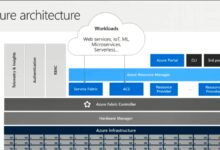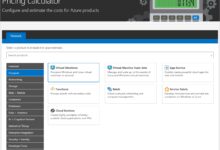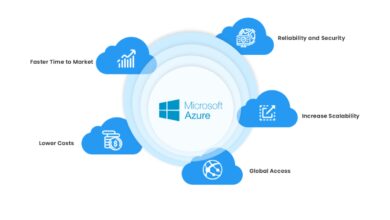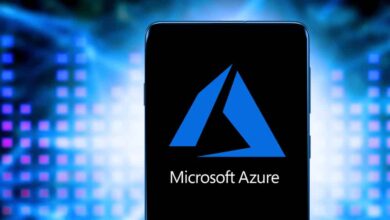Azure Portal Log In: 7 Proven Steps to Access with Power
Logging into the Azure portal is your first step toward managing cloud resources with ease and confidence. Whether you’re a developer, IT admin, or business owner, mastering the Azure portal log in process is essential for seamless cloud operations.
Azure Portal Log In: Understanding the Basics

The Azure portal is Microsoft’s web-based interface for managing cloud services, virtual machines, databases, networking, and more. Before diving into advanced features, you must first complete a successful Azure portal log in. This process may seem straightforward, but understanding its components ensures a secure and efficient experience.
What Is the Azure Portal?
The Azure portal, accessible at portal.azure.com, is a centralized dashboard where users can deploy, monitor, and manage all Azure resources. It provides a graphical user interface (GUI) that simplifies complex cloud infrastructure tasks.
- It supports role-based access control (RBAC), enabling secure collaboration.
- It integrates with other Microsoft services like Office 365, Dynamics 365, and Power Platform.
- It offers real-time monitoring and cost management tools.
Why Is Azure Portal Log In Important?
A successful Azure portal log in is not just about access—it’s about security, accountability, and operational efficiency. Every login triggers an authentication process that verifies your identity and permissions.
- Ensures only authorized users access sensitive data.
- Enables audit trails through Azure Monitor and Azure Active Directory logs.
- Facilitates multi-factor authentication (MFA) for enhanced protection.
“Access to the cloud starts with a single login—but that login must be secure, reliable, and traceable.” — Microsoft Azure Security Guidelines
Step-by-Step Guide to Azure Portal Log In
Performing an Azure portal log in correctly ensures you avoid common errors and security risks. Follow these detailed steps to access your account smoothly.
Step 1: Navigate to the Official Azure Portal
Always start by visiting the official Microsoft Azure portal at https://portal.azure.com. Avoid third-party links or search engine ads that may lead to phishing sites.
- Bookmark the URL for future use.
- Ensure the site uses HTTPS and displays a valid SSL certificate.
- Check the domain name carefully: it should be exactly portal.azure.com.
Step 2: Enter Your Credentials
After reaching the login page, enter your email address associated with your Azure subscription. This could be:
- A Microsoft account (e.g., @outlook.com, @hotmail.com).
- An organizational account (e.g., company@yourbusiness.com) managed via Azure Active Directory (Azure AD).
- A work or school account provided by your employer or educational institution.
After entering your email, click Next and input your password. Make sure Caps Lock is off and your keyboard layout is correct.
Step 3: Complete Multi-Factor Authentication (MFA)
If MFA is enabled—which it should be—you’ll be prompted to verify your identity using a second method. Options include:
- Microsoft Authenticator app notification or code.
- Text message (SMS) with a one-time passcode.
- Phone call verification.
- Security key (FIDO2 compliant).
This step significantly reduces the risk of unauthorized access, even if your password is compromised.
Troubleshooting Common Azure Portal Log In Issues
Even experienced users encounter problems during the Azure portal log in process. Knowing how to resolve them quickly minimizes downtime and frustration.
Issue 1: ‘Incorrect Password’ Error
This is one of the most frequent login issues. Causes include:
- Typographical errors when typing the password.
- Using an outdated password after a recent change.
- Account lockout due to multiple failed attempts.
To fix this:
- Click Forgot password? to reset it via email or phone.
- Ensure your password meets complexity requirements (uppercase, lowercase, number, symbol).
- Contact your Azure administrator if self-service password reset is disabled.
Issue 2: ‘User Not Found’ or ‘No Subscription Found’
This error typically means one of the following:
- You’re using the wrong email address.
- Your account isn’t assigned to any Azure subscriptions.
- You’re logging into the wrong directory (tenant).
Solutions:
- Double-check the email address used for Azure access.
- Use the directory switcher in the top-right corner to select the correct Azure AD tenant.
- Ask your administrator to assign you to a subscription or confirm your role.
Issue 3: MFA Prompt Not Working
If you’re not receiving MFA codes or push notifications:
- Check your mobile device’s internet connection.
- Ensure the Microsoft Authenticator app is updated.
- Verify that your phone number or email for MFA is current.
- Try switching to a different verification method (e.g., app code instead of push).
If the issue persists, contact your IT support team to re-register your MFA settings.
Security Best Practices for Azure Portal Log In
Securing your Azure portal log in is critical to protecting your cloud environment from breaches and unauthorized access.
Enable Multi-Factor Authentication (MFA)
MFA is the single most effective security measure you can implement. According to Microsoft, MFA blocks over 99.9% of account compromise attacks.
- Enforce MFA for all users, especially administrators.
- Use phishing-resistant methods like FIDO2 security keys.
- Configure conditional access policies to require MFA based on risk or location.
Learn more about setting up MFA at Microsoft’s MFA documentation.
Use Strong, Unique Passwords
Your password is the first line of defense. Avoid reusing passwords across platforms.
- Create passwords with at least 12 characters, including numbers, symbols, and mixed cases.
- Use a reputable password manager (e.g., Microsoft Authenticator, LastPass, 1Password).
- Change passwords periodically, especially after suspicious activity.
Leverage Conditional Access Policies
Conditional Access in Azure AD allows you to control how and when users can perform an Azure portal log in.
- Block logins from untrusted locations or countries.
- Require compliant devices (e.g., Intune-managed) for access.
- Detect and respond to risky sign-ins using Identity Protection.
These policies help enforce zero-trust principles and reduce exposure to threats.
Managing Multiple Accounts During Azure Portal Log In
Many professionals manage multiple Azure subscriptions or directories. The login process must accommodate these scenarios without confusion.
Switching Between Directories (Tenants)
After logging in, you might need to switch between different Azure AD tenants. This is common for consultants or employees working across subsidiaries.
- In the Azure portal, click your profile icon in the top-right corner.
- Select Switch directory and choose the desired tenant.
- If the directory doesn’t appear, ensure you have access and try logging in directly with that tenant’s domain.
Using Guest Accounts in Other Tenants
If you’re invited as a guest user (B2B collaboration), you can perform an Azure portal log in using your home tenant credentials.
- You’ll receive an invitation email with a link to access the external portal.
- After accepting, you can switch to the guest tenant from your account menu.
- Your permissions are limited to what the host organization grants you.
Managing Personal vs. Work Accounts
It’s easy to mix personal Microsoft accounts with work accounts. To avoid confusion:
- Use separate browsers or browser profiles for personal and professional logins.
- Clear cache regularly if switching accounts frequently.
- Use Microsoft Edge’s profile separation or Chrome’s multi-account containers.
Advanced Access Methods Beyond Standard Azure Portal Log In
While the web portal is the most common way to access Azure, advanced users have alternative methods that enhance productivity and automation.
Azure CLI for Command-Line Access
The Azure Command-Line Interface (CLI) allows you to manage resources without using the portal interface.
- Install Azure CLI from Microsoft’s official site.
- Run
az loginto authenticate via a device code or browser. - Use scripts to automate deployments and monitoring.
This method is ideal for DevOps teams and infrastructure-as-code workflows.
Azure PowerShell Module
Powershell offers deep integration with Windows environments and enterprise automation.
- Install the
Azmodule usingInstall-Module -Name Az. - Run
Connect-AzAccountto initiate the Azure portal log in process. - Execute complex administrative tasks with precise control.
Powershell is especially useful for batch operations and hybrid cloud setups.
Using Service Principals for App Authentication
For non-interactive scenarios (e.g., CI/CD pipelines), service principals provide secure authentication.
- Create a service principal in Azure AD with assigned roles.
- Use client ID and secret (or certificate) to authenticate apps.
- Avoid embedding user credentials in code.
This approach follows the principle of least privilege and improves security posture.
Monitoring and Auditing Azure Portal Log In Activities
Tracking who logs in, when, and from where is crucial for compliance and threat detection.
Using Azure Monitor and Log Analytics
Azure Monitor collects sign-in logs and operational data across your environment.
- Set up diagnostic settings to stream logs to a Log Analytics workspace.
- Create alerts for failed login attempts or logins from unusual locations.
- Visualize login trends with custom dashboards.
These insights help identify anomalies before they become incidents.
Reviewing Sign-In Logs in Azure AD
The Azure Active Directory sign-in logs provide detailed records of every Azure portal log in attempt.
- Navigate to Azure Active Directory > Monitoring > Sign-in logs.
- Filter by user, app, status (success/failure), IP address, or time range.
- Investigate risky sign-ins flagged by Identity Protection.
This data is invaluable during security audits or incident response.
Enabling Azure AD Audit Logs
Audit logs capture administrative actions, such as role assignments or policy changes.
- Go to Azure AD > Monitoring > Audit logs.
- Track who modified access controls or created service principals.
- Export logs to SIEM tools like Microsoft Sentinel for advanced analysis.
Together with sign-in logs, audit logs form a complete picture of user activity.
Optimizing the Azure Portal Log In Experience
Beyond security and troubleshooting, optimizing your login workflow enhances productivity.
Using Single Sign-On (SSO)
Single Sign-On allows users to access multiple applications—including the Azure portal—with one set of credentials.
- Configure SSO via Azure AD for seamless access to SaaS apps.
- Integrate with on-premises identity providers using federation (e.g., ADFS, PingFederate).
- Reduce password fatigue and improve user adoption.
SSO is a cornerstone of modern identity management.
Saving Login Sessions Securely
While convenience is important, keeping sessions open poses risks.
- Allow session persistence only on trusted, private devices.
- Set shorter token lifetimes for high-risk roles (e.g., Global Admins).
- Encourage users to manually sign out when finished.
Balancing usability and security ensures a smooth yet safe experience.
Customizing the Portal Dashboard After Log In
Once logged in, personalize your dashboard to display the most relevant resources.
- PIN key metrics like CPU usage, billing alerts, or VM status.
- Organize blades by project, department, or environment (dev/test/prod).
- Share dashboards with team members for collaborative monitoring.
A tailored dashboard reduces navigation time and improves decision-making.
How do I reset my Azure portal password?
If you’ve forgotten your password, click “Forgot password?” on the login screen. You’ll be guided through a secure reset process using your recovery email, phone number, or security questions. If self-service password reset isn’t enabled, contact your Azure administrator for assistance.
Can I log in to Azure without internet access?
No, the Azure portal requires an active internet connection. However, you can use Azure CLI or PowerShell offline if already authenticated (tokens are cached). For long-term offline work, consider syncing documentation or using local development environments like Azure Stack.
What should I do if I’m locked out of my Azure account?
If you’re locked out due to multiple failed attempts or policy enforcement, wait 30 minutes for automatic unlock or contact your Azure AD administrator. They can reset your account status, clear sign-in blocks, or assign temporary access through the Azure portal.
Is it safe to save my Azure login on a shared computer?
No, never save your Azure portal log in credentials on a shared or public computer. Always choose “No” when prompted to stay signed in. Use private browsing mode and log out explicitly after each session to prevent unauthorized access.
How can I improve the speed of my Azure portal log in?
To speed up the login process, ensure you have a stable internet connection, use a modern browser (Edge, Chrome, Firefox), disable unnecessary extensions, and pre-authenticate with tools like Azure CLI. Also, avoid switching between multiple tenants unnecessarily.
Mastering the Azure portal log in process is more than just entering a username and password—it’s about security, efficiency, and control. From navigating the initial login steps to troubleshooting issues and implementing advanced access methods, every aspect plays a role in your cloud journey. By following best practices like enabling MFA, monitoring sign-ins, and using secure authentication methods, you protect your organization’s digital assets. Whether you’re a beginner or an expert, continuous learning and vigilance ensure your Azure experience remains smooth, secure, and productive.
Recommended for you 👇
Further Reading:









